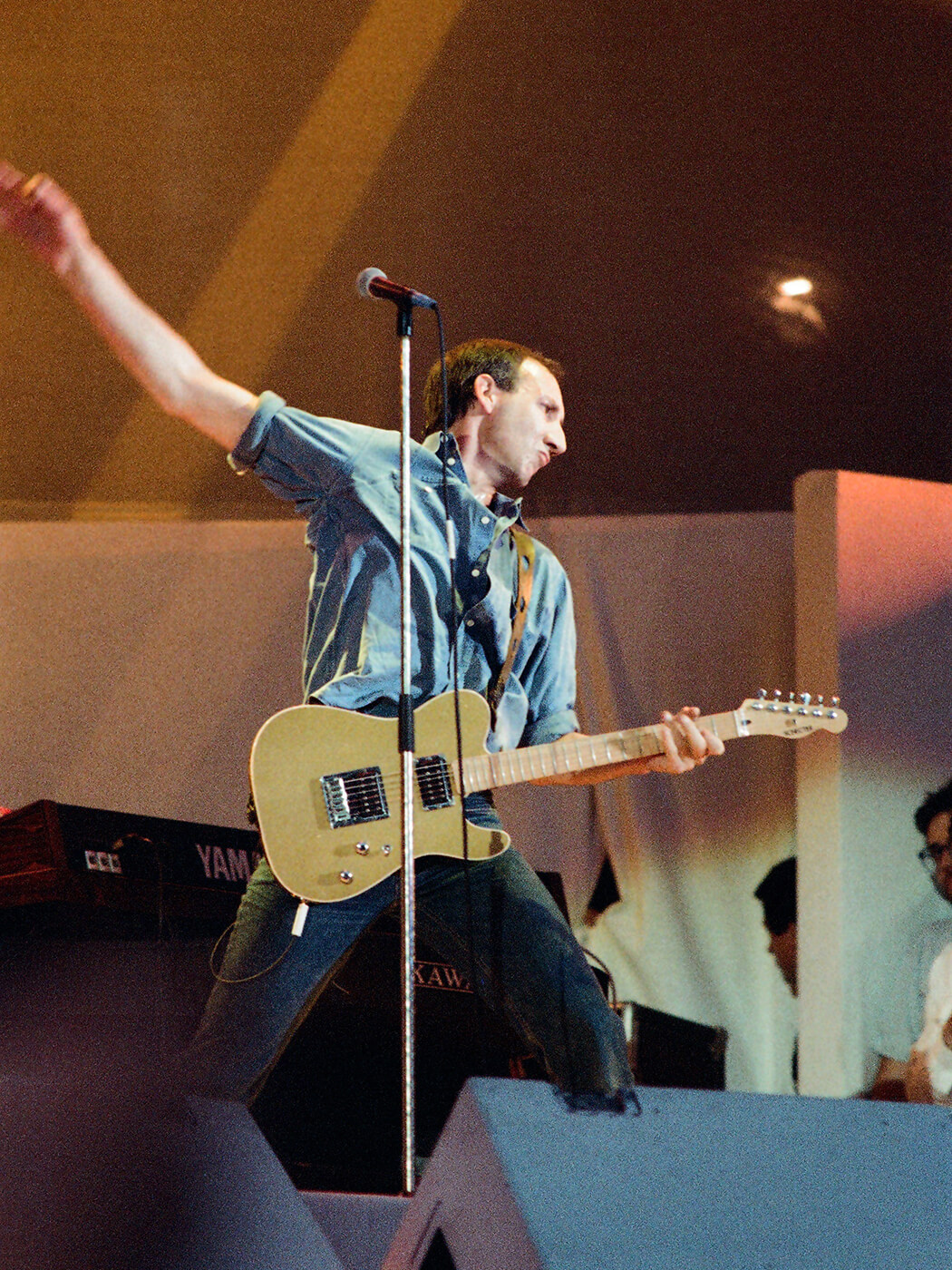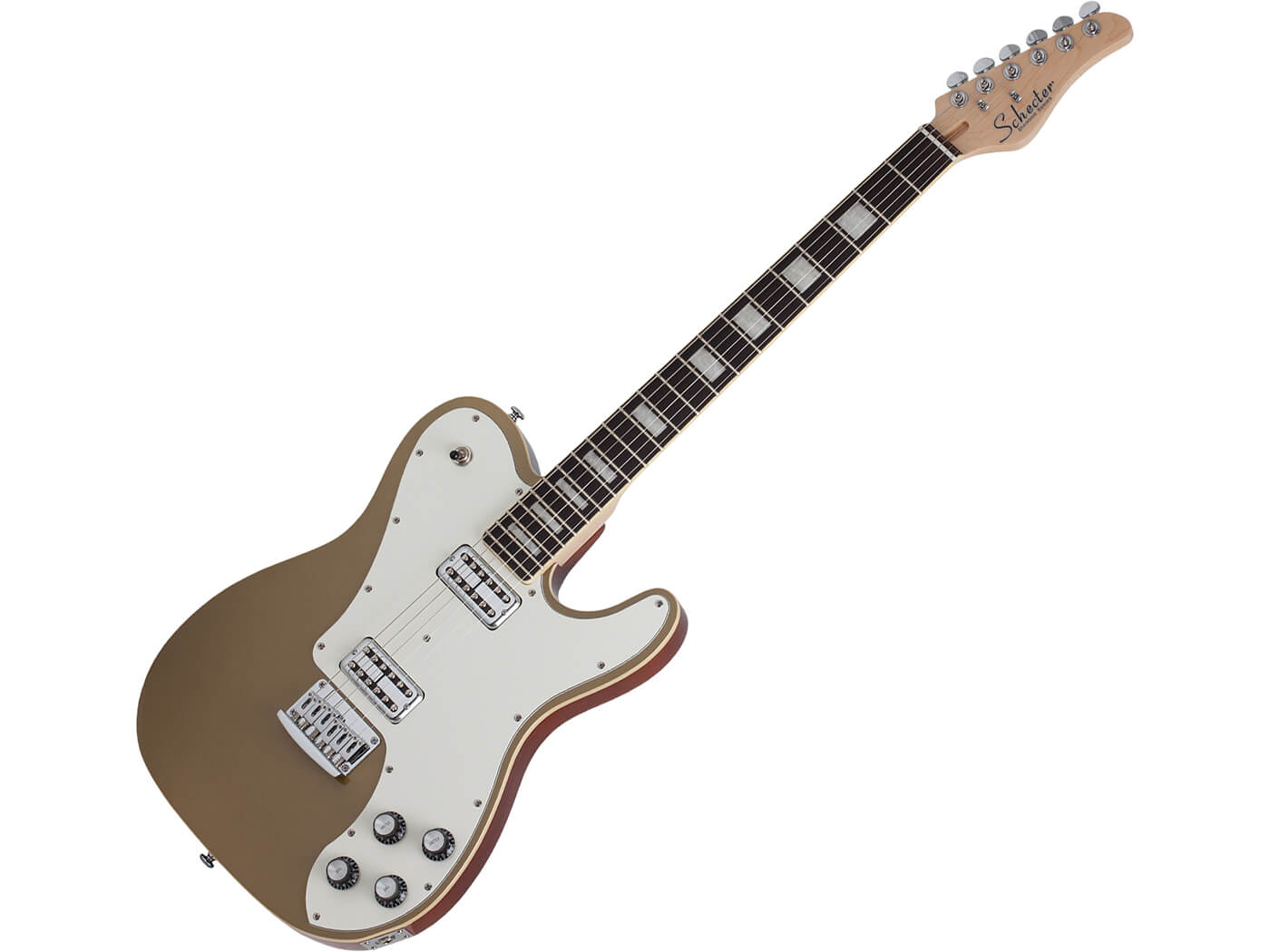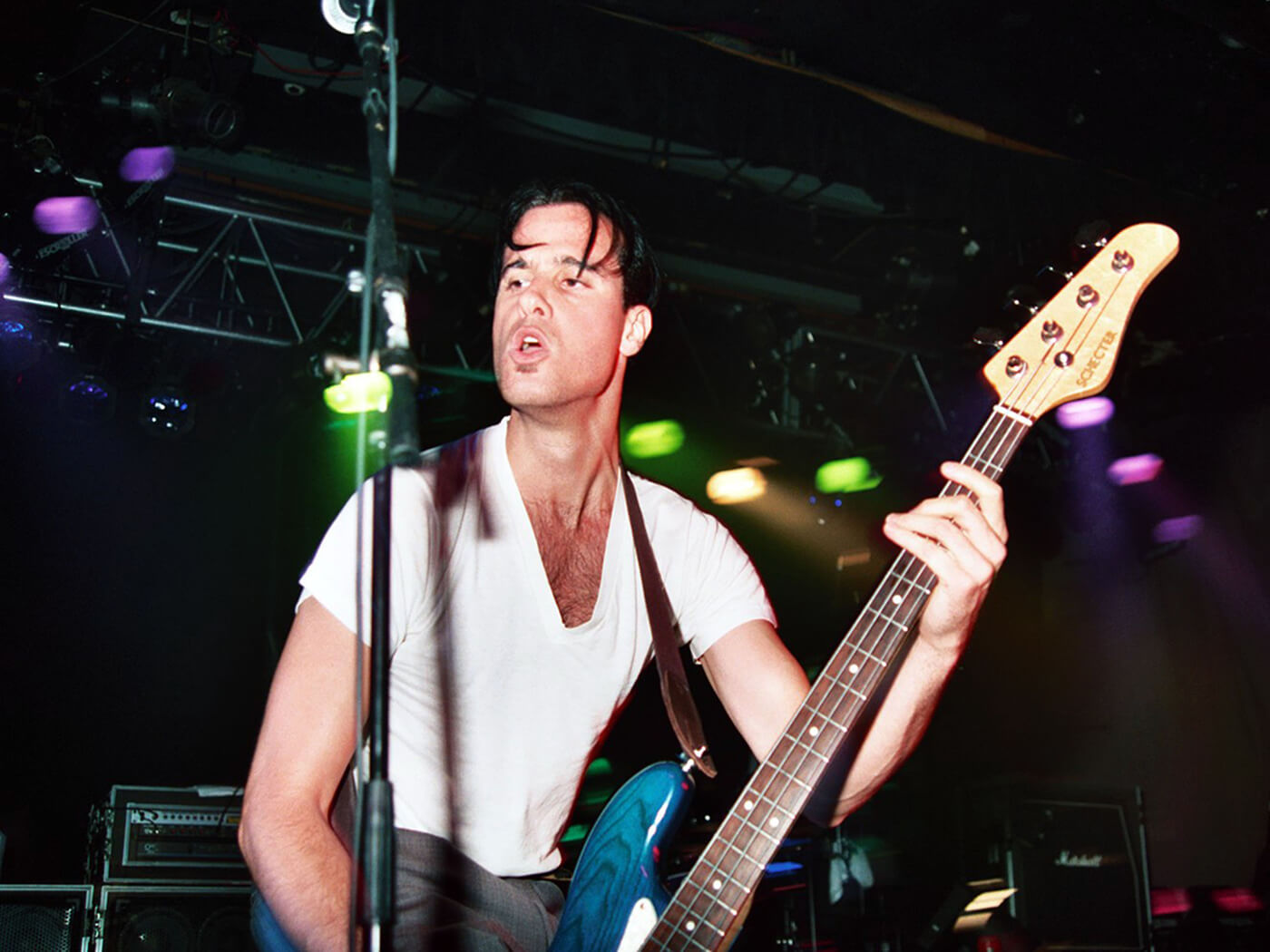A Brief History of Schecter Guitars
From humble beginnings to a massive name in the heavy guitar world, here’s the story of one of the most unique US guitar brands

Mark Knopfler of Dire Straits playing a Schecter guitar in 1991. Image: Phil Dent/Redferns via Getty Images
Back in 1976 a young engineer named David Schecter opened a small guitar repair shop in Van Nuys, California. Every successful business needs a niche, and in Schecter’s case, he and his crew specialised in making replacement guitar parts for existing models. Schecter reportedly made all the jigs, dies, and machines necessary to build his replacement parts on his own – he even built his own belt sanders – one of which remains at the Schecter factory to this day.
- READ MORE: A Brief History of Mosrite Guitars
Schecter was incredibly dedicated to his work – he even lived in his shop. And it’s not like the facility was palatial – in those early days the buildings consisted of a wood shop, a metal shop and an electronics shop, along with a warehouse that also housed the sales department.
David’s background was in auto body work and his first guitar was built at an auto body shop in Boston after-hours – it was reportedly made of white pine and finished with automotive paint. He then built a few guitars for friends using hand tools inside his apartment while doing metalwork and finishing at the auto body shop.
In 1977, not long after they started, the small crew at what would be known as Schecter Guitar Research were looking for someone to run the wood shop – they found a young, talented luthier by the name of Tom Anderson, and the rest is history.

Tom Anderson, of course, would go on to be one of the most well-respected boutique guitar builders in the US, and under Anderson’s tutelage Schecter built bodies and necks, in addition to pickups, wiring assemblies, bridges… pretty much everything. In fact, by the late 70s, Schecter was making over 400 different guitar parts!
Many of these parts were replacement parts for Fender and Gibson models, but neither company ever used Schecter as a supplier for their factories (although Charvel did). As the company was only making replacement components and as such weren’t seen as direct competition, neither Fender or Gibson sued them – even when they began making replacement necks. At least, they didn’t sue them yet.
Within a year or two Schecter was making everything you’d need to build a guitar from scratch, but the company didn’t actually build guitars itself until 1979. The first complete Schecter guitars were assembled by Tom Anderson, Dave Schecter, and Herschel Blankenship. It started off as something they’d do in their spare time when they had particularly nice pieces of wood to work with. Before long, Schecter brought in a couple of guys from Memphis – Tom Stinson and Tom Keckler – to do the building, with Anderson supplying top quality woodworking for them to use.
Around this time, Dan Armstrong (who famously popularized the use of acrylic guitars), helped design some pickups for Schecter – most famously the Z-Plus Pickup. Armstrong insisted on it being encased in black epoxy to hide his design, but the epoxy would shrink over time and end up breaking the pickup – guess that’s one way to keep things under wraps.

As for the first guitars, they were high quality instruments (and the price tags reflected that) and were sold only by twenty retailers across the United States. There were four shapes – T-type, S-type and two different hybrids of the two.
By 1983 the Schecter Custom Shop, as it had become known, was struggling to meet the demand for their instruments. That same year, the company was purchased by a group of Texas investors who moved the company to Dallas. Although David Schecter was no longer involved with the company, they continued building guitars using Schecter parts as well as imported parts.
At the winter NAMM show the following year, in 1984, the company introduced 12 new guitar and bass models, the most popular of which closely resembled a Fender Telecaster. This is commonly referred to as the “Pete Townshend” even though Townshend himself had no formal association with the guitar – Townshend had used T-type Schecter guitars onstage (and continued to until 1988), but there was no formal relationship, and so the brand resorted to a lot of clever marketing to push the association without actually having to pay him as a spokesperson.
In fact, Schecter continues to make versions of this guitar to this day, named knowingly the PT model. In those days, however, the Tele-style guitars were called the Saturn and the Strat-style were called the Mercury models.

As previously alluded to, while Fender had been cool with Schecter making Strat- and Tele-style necks when it was just a parts company, that laid back attitude ended soon after that 1984 NAMM Show. In the months that followed Fender filed a lawsuit against Schecter and it’s generally believed that this legal situation ultimately led to the company folding two years later.
Schecter continued to make guitars right up until the end in late 1986 and early 1987– in fact it was during this era that Schecter did their first production run of signature guitars for Yngwie Malmsteen. The YM-1, which was modeled after his “Duck” Stratocaster – few were made before the company folded, but you can still find them on the used market from time to time. Nevertheless, the company ultimately closed its doors, but the end was far from over.
In 1987, the Texas investment group ended up selling the company to a Japanese businessman named Hisatake Shibuya. Shibuya owned a lot of music-centric companies, most notably ESP Guitars and Musicians Institute in Hollywood. Shibuya moved the company back to California and back to its roots as a high-end custom shop operation.
Schecter guitars were once again only available from a few select retailers, one of which, Sunset Custom Guitars, was actually owned by Shibuya. A man named Michael Ciravolo worked at that shop and in 1996, he would become president of Schecter Guitars.

Ciravolo was well connected in the music industry through his years of working at a LA guitar shop. He started bringing on endorsees from the big rock bands of the mid-90s like Stone Temple Pilots and White Zombie. The company had distanced itself from the Fender-centric designs and started incorporating new modern designs to their lineup but it was still a small custom shop producing 40 guitars per month.
To increase production while retaining the company’s image, Ciravolo decided to start a new line of guitars, The Diamond Series which would be built in a South Korean factory, before being shipped to the US to be set up in a Schecter shop. In the summer of 1998, the Diamond Series made its debut, including six affordably priced non-custom guitars.
In 2012 and 2013 Schecter expanded their Custom Shop and announced a USA Production Series. That same year they also entered the amplifier. In the years since, Schecter’s umbrella has expanded to include Wylde Audio in 2015, and continues to produce gear at different price points, while always staying true to the ethos of high-quality materials and construction that began in Van Nuys all those years ago.




